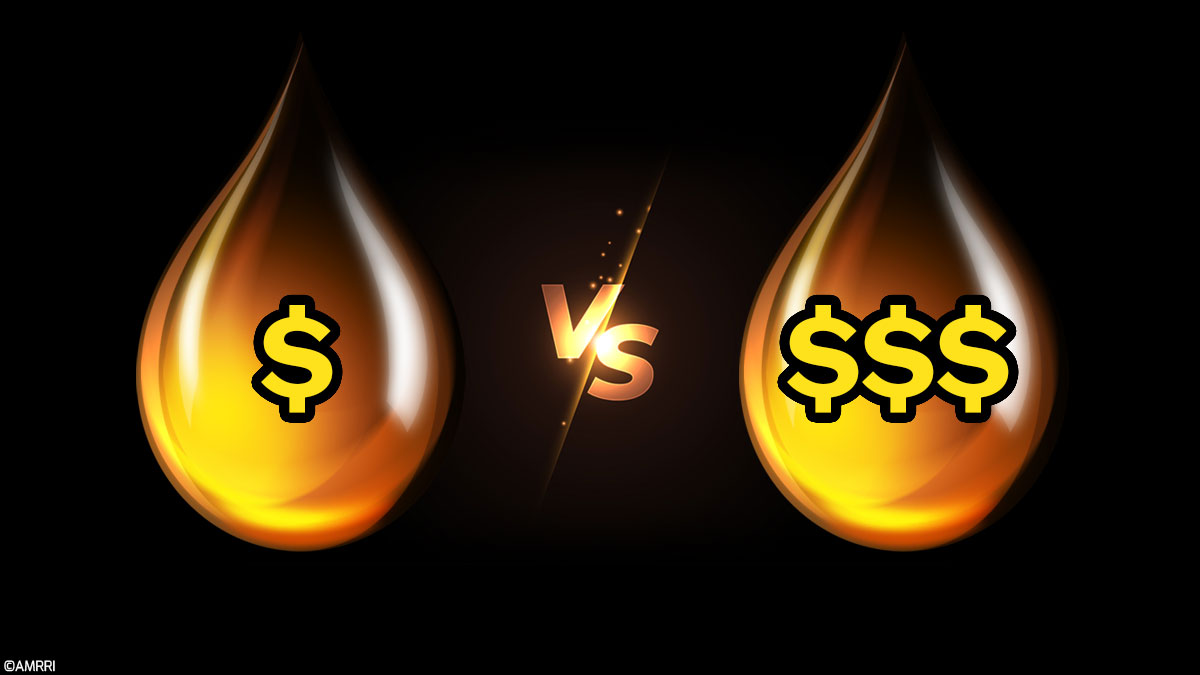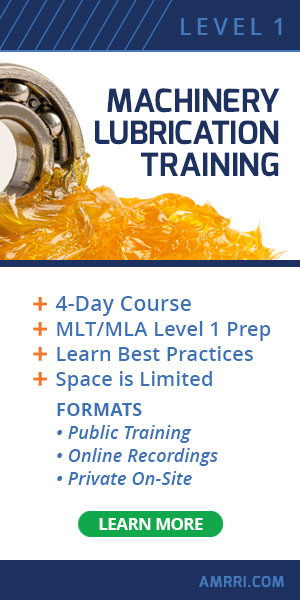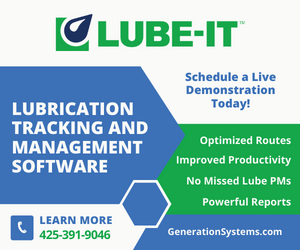I chose this topic this issue because the biggest bang for any organization is to get their lubricants right. With anywhere from 50% – 70% of your current downtime being caused by improper lubrication, there is only one way to spend your limited maintenance and reliability funds, proper lubrication.
I can tell you factually that if you do not believe that your downtime is being driven by improper lubrication, you have not properly identified your root cause. Deny this to your peril. Spend all the money you want elsewhere and cover it up with manipulated figures; the reality is that until you admit this, much like an addict, you will never have real success.
Why Many Lubricants Are Similar
Most industry professionals do not know that there are few similarities between lubricants simply because they come from the earth. Petroleum-derived lubricating oil is a mixture produced by atmospheric and vacuum distillation of selected paraffinic and naphthenic crude oils, after which chemical changes may be required to produce the desired properties of the refined product.
Typically, lubricants contain 90% base oil and less than 10% additives. Vegetable oils or synthetic liquids such as hydrogenated polyolefins, esters, silicones, fluorocarbons, and many others are sometimes used as base oils.
Base oil is produced through the refining of crude oil. A 42-gallon barrel of crude oil can yield nearly 45 gallons of petroleum products, but only about .4 gallons or less than 1% goes to make lubricants. The bulk goes to gasoline, diesel fuel, and kerosene.
Crude oils are classified by their sulfur content. Sweet oils have a lower sulfur content than sour oils. High sulfur or heavy oils are the lowest quality and the least expensive on the global market.
There are three reasons high-sulfur crude oil is lower quality and less expensive than its low-sulfur counterpart.
- The first reason is that high-sulfur crude oils produce greater emissions, particularly those that are toxic and have a high global warming potential.
- The second reason is that high-sulfur oils cause oxidation and corrosion. Refining high-sulfur crude is expensive because of its high oxidation and corrosion qualities.
- The third reason is that the higher the sulfur count, the lower the hydrocarbon count and hydrocarbons are the components in petroleum that combust and generate energy.
Low sulfur or light oils bring the highest price because they are of the highest quality. They require less effort to obtain better results than their high-sulfur counterparts.
Where do these oils come from? They are classified into four known types.
The tar sands, also known as oil sands, are a mixture of mostly sand, clay, water, and a thick molasses-like substance called bitumen. Bitumen is made of hydrocarbons, the same molecules in liquid oil, and is used to produce gasoline and other petroleum products.
The Organization of Petroleum Exporting Countries (OPEC) is widely known. OPEC is a loosely affiliated entity with 13 OPEC members and 10 of the world’s major non-OPEC oil exporting nations. OPEC aims to regulate oil supply to set the price on the world market.
According to current estimates, 80.4% (1,241.82 billion barrels) of the world’s proven oil reserves are in OPEC member countries, with the bulk of OPEC oil reserves in the middle east, amounting to 67.1% of the OPEC total.
As a cartel, the OPEC member countries collectively agree on how much oil to produce, directly affecting the ready supply of crude oil in the global market at any given time. OPEC subsequently exerts considerable influence over the worldwide market price of oil and, understandably, tends to keep it relatively high to maximize profitability.
The oil from these regions is typically on the heavier and sour end of the spectrum.
Brent oil is a name given to a relatively light crude oil made from a blend of crudes from 19 oil fields in the North Sea. Brent crude is one of the three main benchmarks for oil, along with West Texas Intermediates (WTI) from North America and Dubai Crude from the Persian Gulf.
West Texas Intermediate (WTI) is from the United States. These are sweeter and lighter than all other crudes and are usually considered the finest crude oils.
If I was to stop this article here, you should be able to see that the statement that oil is all the same because it comes from the earth is far from accurate.
However, after deciding which crude oil base we desire for our equipment lubricant, there is much more to consider.
The Truth About Lubricant Suppliers
During my training classes and presentations, I draw a parallel to the difference in whom you buy your lubricants from to a comparison between Bobby Flay cooking a prime rib and me.
While we both can be given the same recipe and the chance to select our ingredients, the fact is that Bobby Flay will always provide a better product because of his experience and his knowledge of the difference in premium meats and ingredients.
This is the same with lubricants. The companies we are most familiar with, because of their gasoline production and global marketing departments, buy base oils and ingredients to make fuel. Initially, they saw lubricants as a waste product, and now they sell them to unknowing users as a profit stream for them but to our detriment.
Again, using my Bobby Flay example, the recipe can be followed by an idiot. Still, if you want the best reliability for your plant, you need a real skilled trades professional (Bobby Flay), not trying to sell you lubricants and profiting from your lack of knowledge.
As I have said in previous articles, do not fall for “free” supplier offerings or meaningless titles used to deceive you. Suppliers, salespersons, and OEMS are not qualified to make any lubrication decisions for your plant. My other warning is to vet any consultant carefully.
Most consultants lack any qualifications, so verify these individuals and organizations well, and you will be surprised at how little they know. In 42 years, I have yet to walk onto a site as an employee or consultant that has not been lied to by their lubricant supplier and OEM.
Lubricating oils and greases are comprised of 70% – 95% base oil, 0% – 10% additives, and in grease 35 – 30% thickener.
The decision on mineral, synthetic, and vegetable base oils is reliability based and should never be made by the lubricant supplier, salespersons, or original equipment manufacturer (OEM).
They lack any experience or training in reliability and focus solely on their profit.
Deciding on the additives is another decision never left to the supplier, salesperson, or OEM. Additives will enhance, suppress, and add a new property to the lubricant, which should be left to qualified reliability professionals.
In grease applications, selecting a thickener again should not be left to amateurs, like suppliers, salespersons, and OEMS. Only a skilled trades professional with experience and knowledge should select the grease thickener.
With the base oil being 70% – 95% of the makeup, the properties of these base oils need to be matched to each lubrication point. The base oil type must be decided by someone who understands their properties and is not skewed by a desire to sell you their product.
Know that viscosity is the single most important aspect of oil. It is the measure of the lubricant’s resistance to flow and shear. Simply selecting lubricants based on an average could result in critical equipment premature failure. Many organizations consolidate their lubricants to reduce the number to the detriment of their equipment.
Most of these efforts are driven by the site’s lack of knowledge and blind trust in the lubricant supplier. To achieve the reliability we desire, it takes the best ingredients. Buying lubricants based on “cost-to-buy” is never the right decision. I guarantee that working with a qualified reliability professional to identify the right lubricants and making this decision on a cost-to-use basis is the greatest key to reliability success.
The decision on additives is important. Again, this decision must be made by a qualified person without any monetary influence.
The professional must focus solely on the reliability of the operation and nothing else.
Since the base oil is doing all the work, the selection of additives goes a long way to improving the service life of that base oil. Remember that the additive can either suppress, enhance, or impart new properties to the base oil, allowing it to do its best job.
Another thing to remember regarding additives is that filtering your lubricants is vital to success and that too much of a good thing can hurt your lubricants. Over-filtration will strip additives from the base oil and accelerate the degradation of the lubricant. I have seen many organizations do the wrong things for the right reasons.
They are filtering their lubricants without any knowledge. They run the filter system continuously and without regard to stripping additives. This practice will lead to premature failure of the lubricants and unnecessarily early oil changes.
Grease is different from oil in that it has a thickener added to it. This is to keep the oil where we need it. Grease is used in applications where oil will not stay put. The thickener can be thought of as a sponge. The grease will remain in contact with the moving surfaces without leaking out under the force of gravity, centrifugal action, or being squeezed out under pressure.
The decision on which thickener to use is another important one. Never allow the supplier, salesperson, or OEM to dictate this reliability-dependent element to you. While the thickener acts as a sponge, there is much more to consider.
Like my example above, Bobby Flay, there are significant differences in how each type of thickener works and what it is capable of. There are premium and cheap greases. How the grease is manufactured makes a big difference. Two critical aspects of greasing are the thickener’s reversibility and the grease’s water-resistant or waterproof property. All these properties are application specific, and one grease may not be the answer in all lubricated points.
Beware Lubricant Compatibility Charts
Another warning I want to share is the salesman’s use of compatibility charts. If you google compatibility charts on the internet, there are over 100 different charts. Each lubricant supplier makes their own, as do many OEMs. All these are misleading and designed to lie to you about their products.
The only way to determine compatibility is to perform a work test with the products in question. Many so-called independent labs fail to understand this and make wrong compatibility determinations based on their agreements with different suppliers. Again, this is sales motivated, and why allowing your samples to be tested for “free” is a reason your lubrication program is ineffective. Never let the fox watch the hen house.
So, the bottom line is that lubricants have significant differences. Just like everything else, there are top performers and bottom feeders. Invest in premium lubricants and make these decisions on a cost-to-use and never a cost-to-buy basis. If you want to know if you are using a premium lubricant today, it is easy.
If you can pull into a gas station anywhere on the planet and fill up your car, and the sign on the pump is the same as the supplier of your lubricants, you are not using a premium lubricant. Stop falling for the marketing hype.









